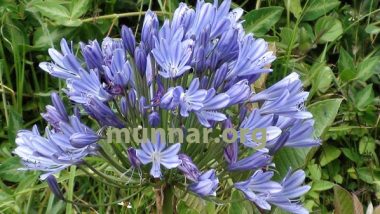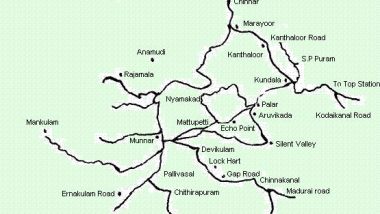The earliest History of Munnar area is not very clear. The region has always been densely forested because of the heavy rainfall it receives during the monsoon season. A number of endemic species of flora and fauna including the famed Neelakunjiri flower and animals like tigers, leopards, elephants and bison were found here.
It is speculated that the region was occupied by the local Muthuvan tribes during the early days. They came here around 900 AD from the plains of Madurai due to some politico social turmoil and established their settlement here. Apart from them, other tribes like the Pallayers, Kaders, Kuruvas and Ooralers were also found in this region.
In 1790, Colonel Arthur Wellesley visited the Kumaly gap in Munnar with his troops to defend the state of Travancore from the invasion of Tipu sultan of Mysore. He was the first recorded European to visit the area. However, Tipu escaped quickly from here.
Record of trade through this region was found in the diary of a European in 1817. As time passed, merchants travelled more and more through Munnar. They carried cloth to Travancore and took away betel nuts.
History of Munnar – Arrival of the Europeans and the plantation era:
In the 1870s, John Daniel Munro – the resident of the court of Travancore visited this area in order to settle a border dispute between the states of Travancore and Madras. He loved the beauty of the region. He also found that the area has very good potential for plantation farming, especially the Kanaan Devan hills. He decided t0 set up his plantation here. The area was ‘jenmam land’ of the Poonjar Royal family who was a subordinate of the Maharaja of Travancore. The term ‘jenmam land’ denotes a land which is under the total control of the Royal family. So, Munro visited the Poonjar Royal family and met with the head of the royal family, Rohini Thirunal Kerala Varma Valiya Raja. Munro leased the land from 1877 to 1879 for Rs. 5000.
In 1878, H.G. Turner and A. W. Turner came here on Munro’s invitation for a shooting expedition and could see the potential of Munnar as a plantation area. They wanted to take opportunity of the cinchona boom. So they joined together to form the North Travancore Land Planting and Agricultural society. Tamil workers were utilized and crops like coffee, cardamom, sisal and cinchona were cultivated.
However, the society faced problem and the land was parcelled out and sold off. In 1880, A. H. Sharp introduced tea for the first time in this area. Finlay Muir and company purchased the land here in 1893 and began to produce tea. In 1897, Kannan Devan Hills Produce Company was formed and tea became established in the area. By 1915, there were 16 tea factories in the area. Though the plantation suffered temporary setbacks in 1924 due to excessive rainfall, flooding and landslide, tea continues to dominate the economy of the region.
History of Munnar – Modern Era
In 1964, the Tatas formed collaboration with the Finlays and by 1983, all the shares have been purchased by Tata and the name was changed to Tata tea ltd. Tourism also began to flourish in Munnar from this time. Today, the virgin forests, the colonial charm of the town and the spectacular rolling hills covered with tea estates and a vast variety of endemic flora and fauna has become a popular tourist destination.


